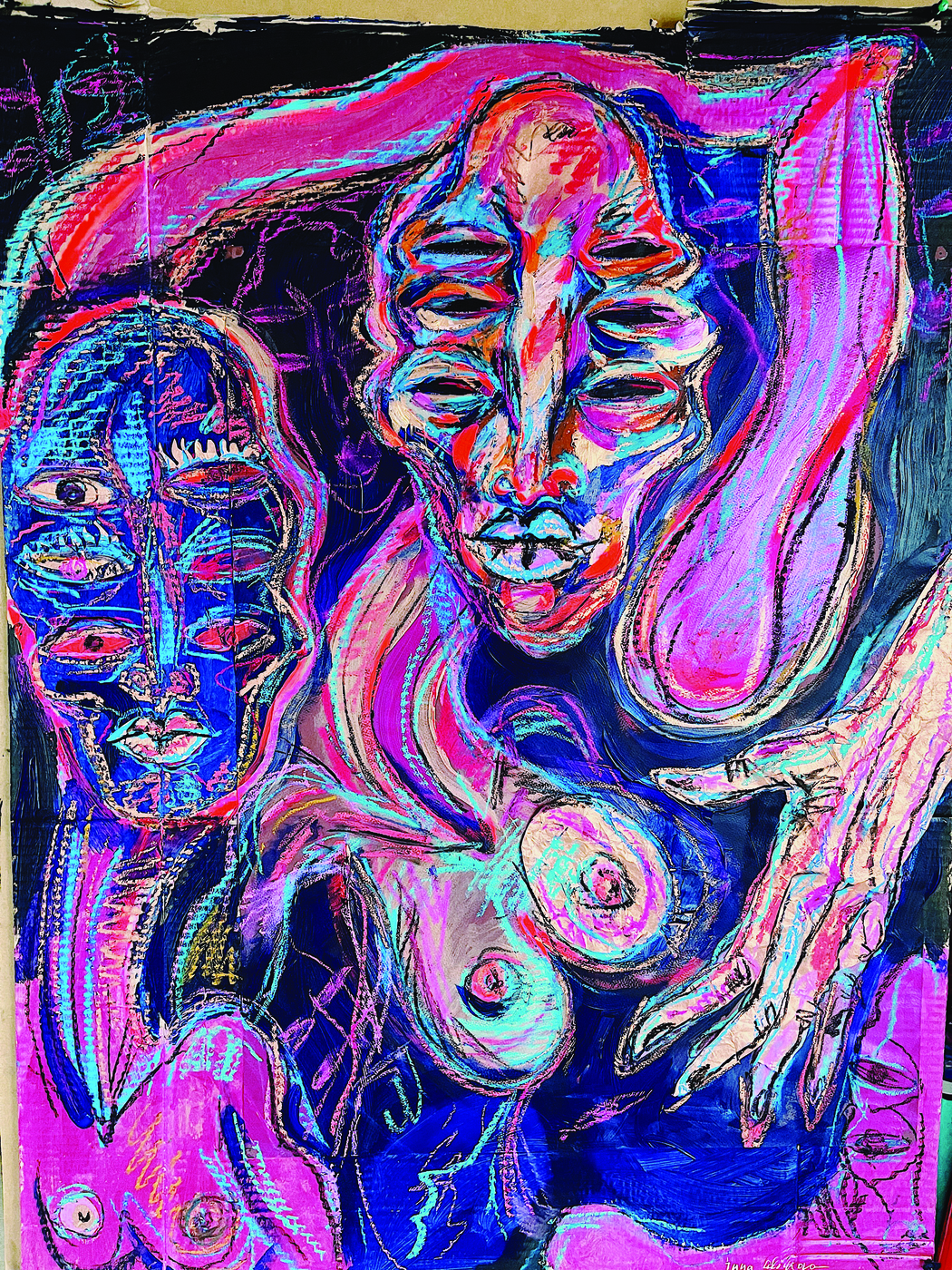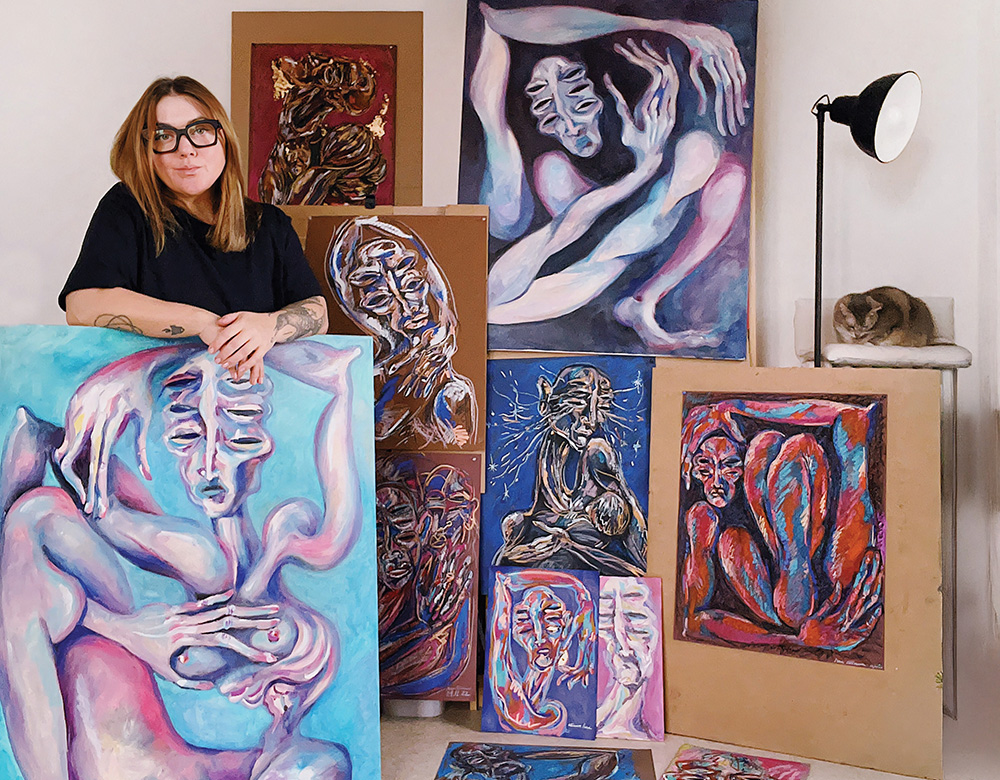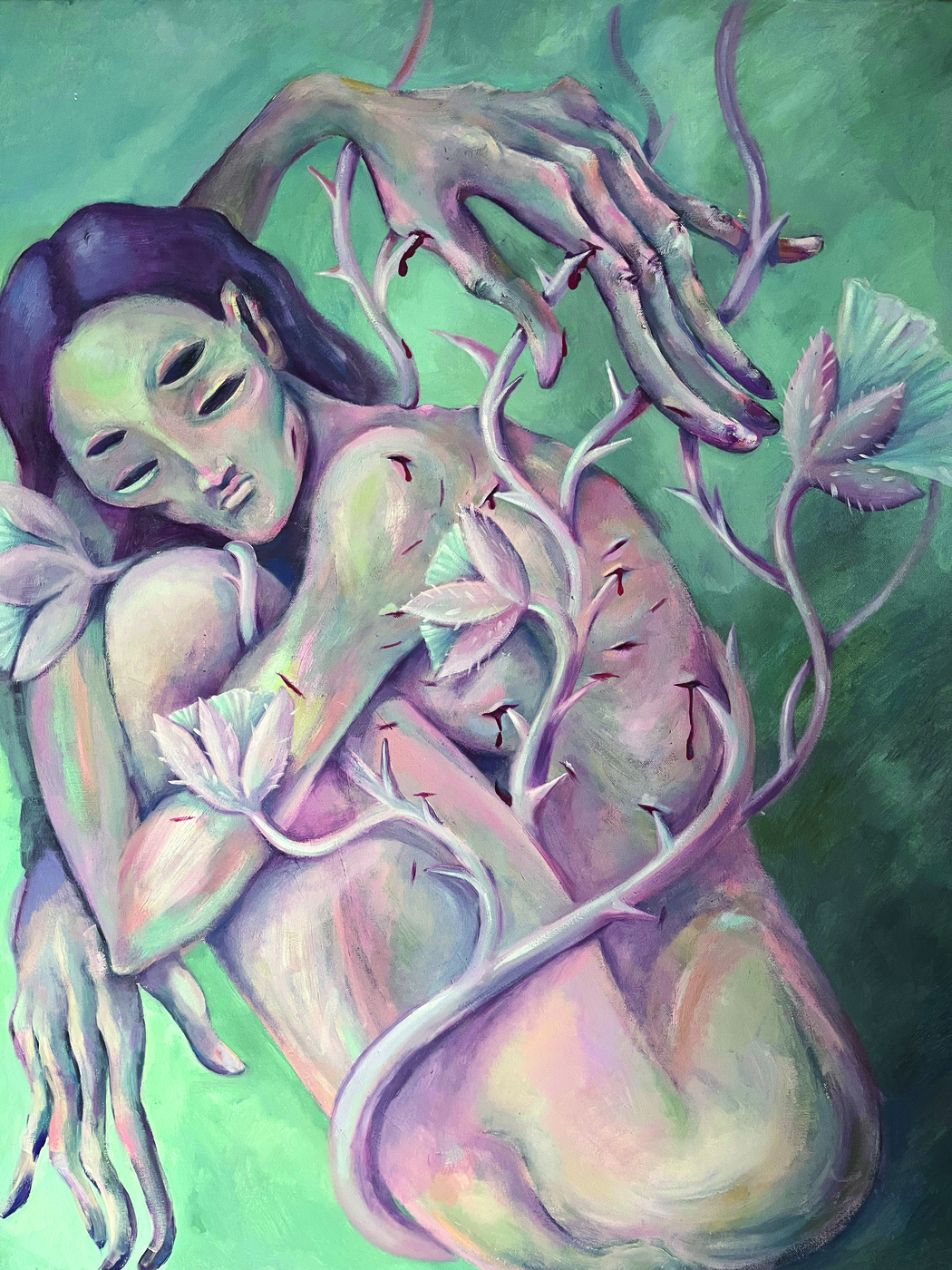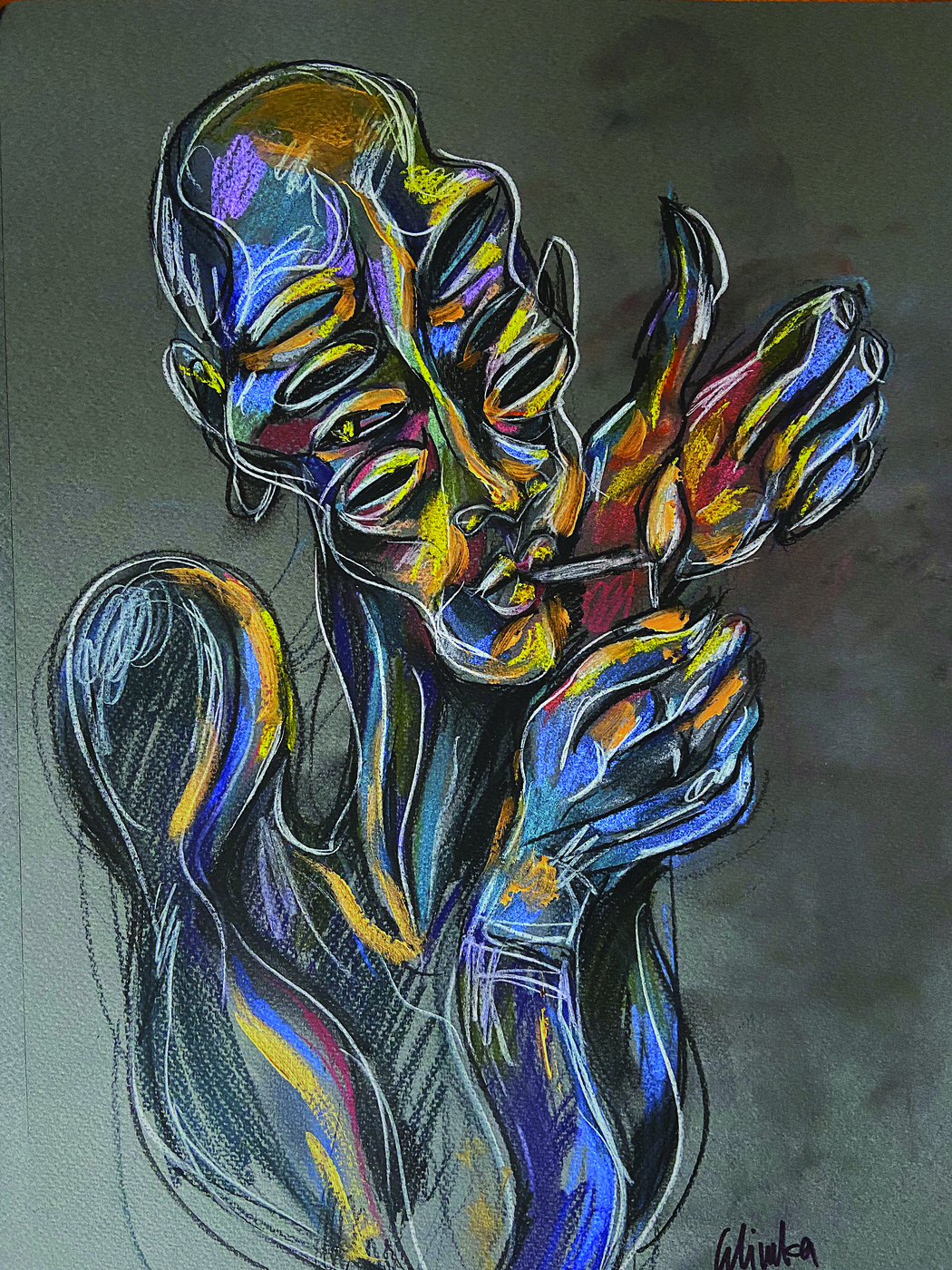Inna Alimova
Year of birth: I was born in 1984.
Where do you live: Paris, France.
Professional Education:
1. Crimean Art School Named N. S. Samokish, Bachelor (September 1999 – June 2003) Ukraine, Simferopol.
2. Kharkiv State Academy Of Design And Art, Master’s Degree (September 2003 – March 2009) Ukraine, Kharkiv.
Describe your art in three words: Mystical, Sensual, Reflective.
Your discipline: I’m working with figurative, reflective abstract art.
Instagram
Your work explores complex emotional states through abstract forms. How do you decide on which emotional state to represent, and how does the process of creating this work help you understand these emotions better?
I’ve been practicing yoga and exploring psychology for many years to better understand my own emotions and to feel comfortable coexisting with others. I interact with people all the time, and they inspire me because I see their experiences, their emotions, and I see the reflections of those emotions within myself. In this way, I try to capture different states that I feel or observe in others.
I’ve come to realize that, in a way, every person goes through certain stages—whether it’s growing up or navigating various crises. People who engage in self-analysis, who try to understand their emotional states, who are deeply sensitive to emotions—all of them are sources of inspiration for me. Sometimes, it’s just through conversation; other times, it’s by observing these emotional states and attempting to express them through different visual techniques, metaphors, forms, and materials.
Your art often addresses themes of self-discovery and transformation. How do you think your own journey of self-knowledge influences the way you approach your art?
I try to observe myself and reflect on what I’m feeling in the present moment. It took me a long time to learn how to understand my emotions because I grew up in an environment where expressing feelings wasn’t encouraged. For a long time, my emotional state was just a mix of different sensations—I simply felt that something was wrong: anxiety, anger, nerves, stress. It took a lot of time and focus to learn how to recognize and name my emotions. I’m still learning.
Through my work, I try to show this journey, these transformations. I aim to express different experiences because so many people go through similar confusion. My art helps me understand what’s happening within me because I feel emotions, but I can’t always articulate them. When I paint, then look at my work and analyze it, it also helps me understand what I’m going through.
The idea of context—how one’s background, environment, and family history shape a person—seems central to your work. Could you share a personal experience that shaped your view of this concept?
I believe that people grow and are deeply influenced by their environment—their surroundings, family values, education, country, and political system. I grew up in a post-Soviet context where people didn’t pay much attention to what they were feeling. It was an environment where human life had little inherent value, and that shaped me profoundly. People lived with a sense that they were small and insignificant, and that their desires and rights could easily be violated.
The school system demanded conformity. If you stood out, you were immediately pushed back into the mold of what you were “supposed” to be. This rigid environment suppressed individuality and made it difficult to grow. I often felt like there was something wrong with me—that I wasn’t good enough, smart enough, or talented enough. It took me a long time to learn how to express myself. And even now, it’s not always easy for me to show and embrace my individuality.
Your figures are often ambiguous, not clearly defined as male or female. What role does this ambiguity play in the way your audience engages with your work?
I often depict people as symbols, as figures, as shells filled with emotions and experiences, containing entire worlds within them. For me, this has much more value because I’m interested in how they think, what they feel, how they perceive the world, how they communicate with others, what they know, understand, and express. All of this matters to me much more than the form they’re placed in.
In my work, the internal world is more significant than the external appearance. That’s why I choose to portray people in an ambiguous way—because I’m focused on their inner experiences rather than on defining their physical identity. This ambiguity invites the viewer to connect with the emotions and ideas behind the figure, rather than getting distracted by surface-level characteristics.
How do you see the relationship between personal trauma and creative expression? Do you believe your art acts as a way of processing or releasing emotions?
Yes, in a way, my art is my therapy. When I experience intense emotions—whether I’m happy, in love, or deeply sad—I start to paint. I can’t create when I’m in a depressive state, but otherwise, art helps me understand what’s happening within me.
For me, it’s not just about releasing emotions; it’s also about exploring new ways of expressing them. I’m curious about finding different forms to convey what I’m feeling. My work becomes a way of processing these emotions, of making sense of them, and sometimes even transforming them into something meaningful.
In your statement, you mention the impact of socio-political and cultural influences on the self. How have these factors influenced your work, particularly as you transition from living in Ukraine to now working in Paris?
Our environment greatly influences us, and that’s true for me as well. I’m originally from Crimea, and although I moved away years ago, the 2014 annexation left my family there. Since then, there’s been the pandemic, and then the war, which forced me to relocate again—this time to France. It was a challenging transition: a new country, a new language, and a profound sense of uncertainty and anxiety that hasn’t left me for the past three years.
I haven’t seen my parents in six years—first because of COVID, and now because of the war. This separation has deeply impacted me. One of the central themes in my work now is existential loneliness. Even though I have friends and a community here, there’s a persistent feeling of disconnection. I feel like a person without roots, without a home—neither here nor there.
This sense of uprootedness has led me to explore themes of identity and belonging in my work. I often paint trees and roots, searching for a sense of grounding. I’m trying to understand who I am and where my roots lie, especially as I navigate this in-between state, longing for a place to truly feel at home.

Your work encourages reflection and self-exploration. What do you hope viewers take away from your art? Is there a specific feeling or idea you wish to evoke?
I don’t aim to provoke a specific emotion. Instead, I want to spark curiosity about self-analysis, self-discovery, and personal growth. I believe that people who understand themselves—their desires, values, and place in life—can live more fulfilling lives because they’re clearer about how they want to live and who they want to be around.
It’s not about knowing exactly what to do in life, but about the quality of relationships and communication. People who understand themselves are more accepting of others’ differences and nuances. I find that interactions with such people are richer, deeper, and more meaningful.




Leave a Reply